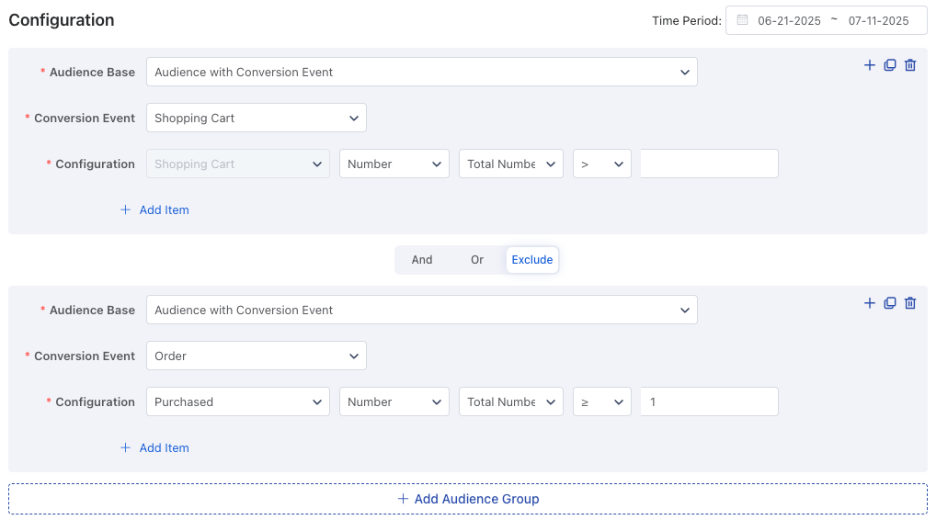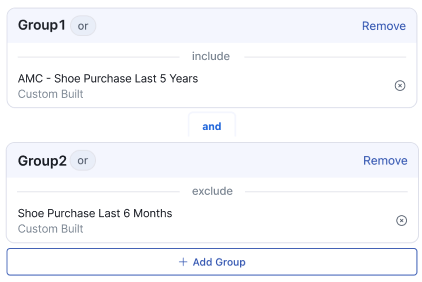Back-to-School AMC Playbook: 3 Audiences to Build, Target, and Scale
The Back-to-School (BTS) shopping period represents the second-largest sales driver of the year, behind the holiday season, and advertisers using Amazon Marketing Cloud's (AMC) audiences can identify and reach the exact shoppers who need that extra nudge to convert, turning high traffic into high returns and momentum for Q4. The BTS advantage? Unlike other tentpole events, shopping continues for weeks, giving advertisers real runway to test AMC strategies and see what works. And with budgets typically increased for the season, it's the perfect time to explore AMC capabilities.
Don't let AMC's complexity hold you back. These three strategies work for beginners building their first audiences and give experienced users fresh approaches to test. Each includes clear steps to launch in your campaigns today.
Boosting BTS Success: 3 AMC Strategies to Test ASAP
1. Target Prime Day Cart Abandoners Still Hunting for Deals
Prime Day cart abandoners could be your highest-intent audience for BTS campaigns. These shoppers demonstrated clear purchase intent but didn't convert, often due to price sensitivity or decision paralysis during the sale frenzy.
How to Set This Up
Build an AMC audience using these parameters:
- Filter for your BTS-specific products only
- Query: Add-to-cart events from June 21 - July 11, 2025, excluding purchases within 30 days
- Apply audience to DSP campaigns or as bid boost in Sponsored Products/Brands

How to Use This Audience
Utilize this audience in DSP campaigns with creative highlighting current deals or price drops since Prime Day. For Sponsored Ads, either layer this audience onto existing campaigns with a modest bid boost (25-50%) or launch dedicated campaigns with aggressive boosts (100%+) to prioritize cart abandoners.
Setting base bids low (20-40% below suggested) with a 100% boost ensures your budget primarily captures high-intent AMC audience clicks rather than general traffic.
Why Does This Work?
This cart abandoner strategy works because it targets shoppers with proven interest at a moment when they're actively seeking deals. But you can refine it further using AMC's path to purchase data. If multi-touch attribution shows cart abandoners convert best through a DSP → SP sequence, build an audience of cart abandoners who were exposed to DSP ads, then apply this refined audience as a bid boost to Sponsored Products campaigns. This precision targeting completes their preferred purchase path, turning abandoned carts into conversions at the highest possible efficiency.
2. Segment and Boost School-Specific Keyword Strategies
School-related search terms demonstrate greater purchase intent than standard, off-season keywords. But the new-to-brand makeup of these BTS-specific keywords may surprise you. While brand keywords typically drive low NTB rates, they often see increased NTB traffic during BTS as shoppers search for products from school supply lists. Category and competitor terms show similar patterns as parents research options for the first time.
How to Set This Up
Create three distinct keyword segments:
- Brand + school terms (e.g., "Brand school bags")
- Category + school terms (e.g., "laptop school bags")
- Competitor + school terms (e.g., "Competitor school bags")
- Apply a 100% bid boost for NTB shoppers for each campaign
How to Use This Audience
By segmenting school-related searches by brand, category, and competitor keywords, you can identify which combinations drive the most cost-efficient new customer acquisition. Apply these segments to separate Sponsored Products or Sponsored Brands campaigns, using the 100% NTB bid boost to ensure competitive placement for high-value traffic. Track performance metrics across all three segments to identify which keyword combinations deserve increased investment.
.png)
Why Does it Work?
This segmentation strategy reveals which keyword types deserve the most investment. By tracking performance across all three segments simultaneously, you'll build a data-driven keyword hierarchy that informs both current optimization and future BTS planning.
3. Size-Up Targeting for Footwear and Apparel Brands
This advanced strategy leverages AMC's 5-year lookback capability to identify families ready for size upgrades. It's particularly powerful for footwear and apparel brands but applies to any size-tiered product category.
How to Set This Up:
Query AMC for customers who:
- Query: Purchased smaller sized ASINs 16+ months ago, no brand purchases in last 6 months
- Create campaigns featuring next-size-up products
- Apply as audience for DSP campaigns or bid boost for Sponsored Ad campaigns

How to Use This Audience
For DSP campaigns, utilize creative that highlights your upgraded size product offerings with clear size progression messaging. For Sponsored Ads, layer this AMC audience into both brand and non-brand campaigns to capture parents searching directly for your brand and those exploring category options. Adjust your purchase lookback window based on product type: shoe sizes may need 12-16 month windows while water bottles or backpacks could extend to 24+ months.
Want to refine this strategy even further? Use AMC's Time to Conversion model, which tracks the journey from first ad exposure to purchase. By analyzing conversion timelines for past size-upgraders, you can identify the optimal retargeting window for each product category to intercept shoppers precisely when they re-enter the market.
Why Does it Work?
This size-up strategy works because it reconnects with past purchasers at a predictable lifecycle moment. While these shoppers have brand familiarity from their previous purchase, the 16+ month gap might mean they're open to exploring options. By targeting these shoppers when BTS timing meets size-up needs, you're driving incremental sales from high-value customers who convert more easily than new prospects but still need that nudge to return.
Level Up Your Advertising Strategy
These AMC strategies transform BTS from a standard seasonal push into a sophisticated testing laboratory. The cart abandoner strategy reveals price sensitivity patterns and optimal retargeting windows. Keyword segmentation uncovers which search paths drive profitable new customer acquisition. Size-up targeting builds a repeatable framework for lifecycle marketing. Each approach delivers immediate ROI while generating insights that compound throughout Q4 and into next year's planning.
While these strategies are powerful, implementing them requires navigating AMC's technical complexity and managing multiple audience queries across campaigns. Xnurta's AMC Hub streamlines this process with pre-built models and no-code audience creation, making advanced AMC strategies accessible without SQL expertise. Instead of spending hours building queries and manually tracking performance across segments, no-code tools like Xnurta help you focus on what matters most: analyzing results, deploying strategies, and scaling what works. Ready to simplify AMC? Explore our award-winning solution or book a demo.




.png)





